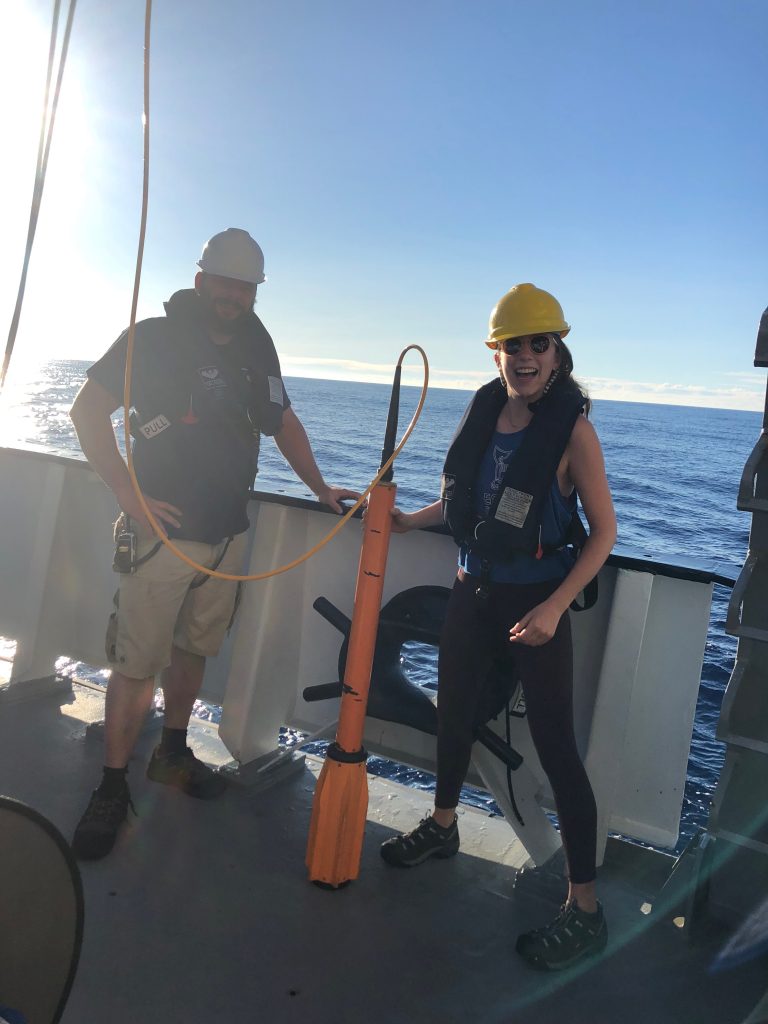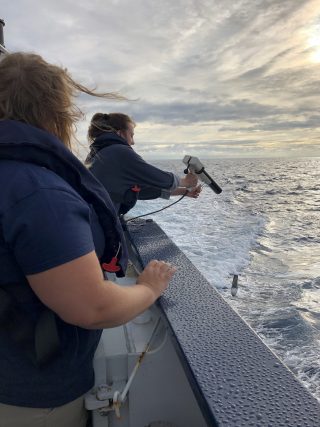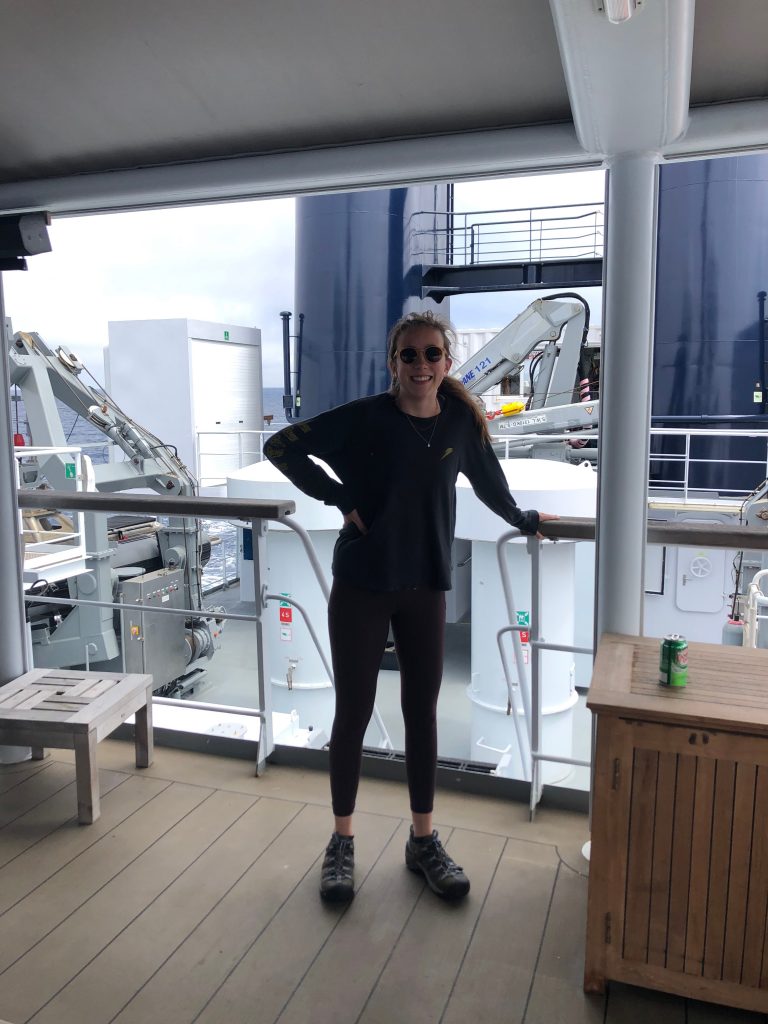Over the past six days, I have seen more data collected than I have ever seen before. I have had the opportunity to watch the collection of this data from start to finish and am impressed by how much goes into getting usable data. Before collecting any data, systems must be calibrated based on current conditions. As it is being collected, it must be monitored and adjusted. Once it is collected, it has to be cleaned up, annotated, and stored so that anyone who may want to use it can find it.

As an example to collect accurate multibeam data, the system used for seafloor mapping, an XBT is used to measure the temperature within an entire water column. In this case, temperature is used to calculate water density which informs us about the sound velocity within the water column, this is what helps make multibeam data more accurate.
While temperature does not seem all that related to a sonar instrument such as Multibeam, it, in fact, makes a huge difference because of the way temperature affects density and density affects sound velocity. While the data is being collected, settings are adjusted to get the most accurate data possible at different depth and in different types of environments. The technicians who are collecting this data are well versed in what works when and can, therefore, ensure that the settings are correct in every given circumstance. Once the data is collected, some data points must be omitted. By cleaning up the data you are able to have a more accurate map. From there, the data can actually be used.

Great – We have data!
But there is a ton of it, so much that it is easy for it to get lost and never be put to good use. The streamline system that has been created to store and organize the data coming from R/V Falkor is extremely impressive. This is the most important part of data collection! With the volume of data coming in, proper storage is paramount to further usage. Thanks to this automated system the marine technicians do not have to spend hours organizing data every day and more can be accomplished… i.e. collecting more data.
Reflecting on what I have learned
In writing all of this, I am impressed by how much I have learned in such a little time. While seafloor mapping is not my main project at school, these skills are still incredibly useful. In any project, calibration is important. Making sure the instruments are taking the most accurate measurements possible is vital to answering any research question with the most confidence possible. Checking as you go and being willing to adapt to changing conditions is critical to any research project since things change, especially in environmental science and biology. These things we study rarely play by our rules so it is us who must adapt. Then there is data management… what an underrated part of research. It can mean the difference between having a final product and having to redo months of work. All of these skills are brought to light in a place like this where such a high volume of data is being produced on a daily basis, but that does not make them any less important while working on a smaller scale.


